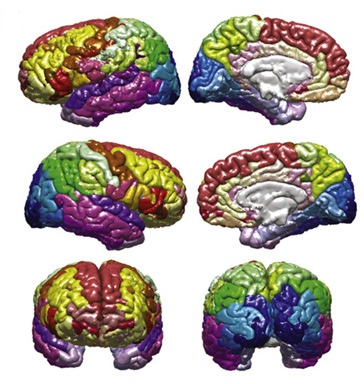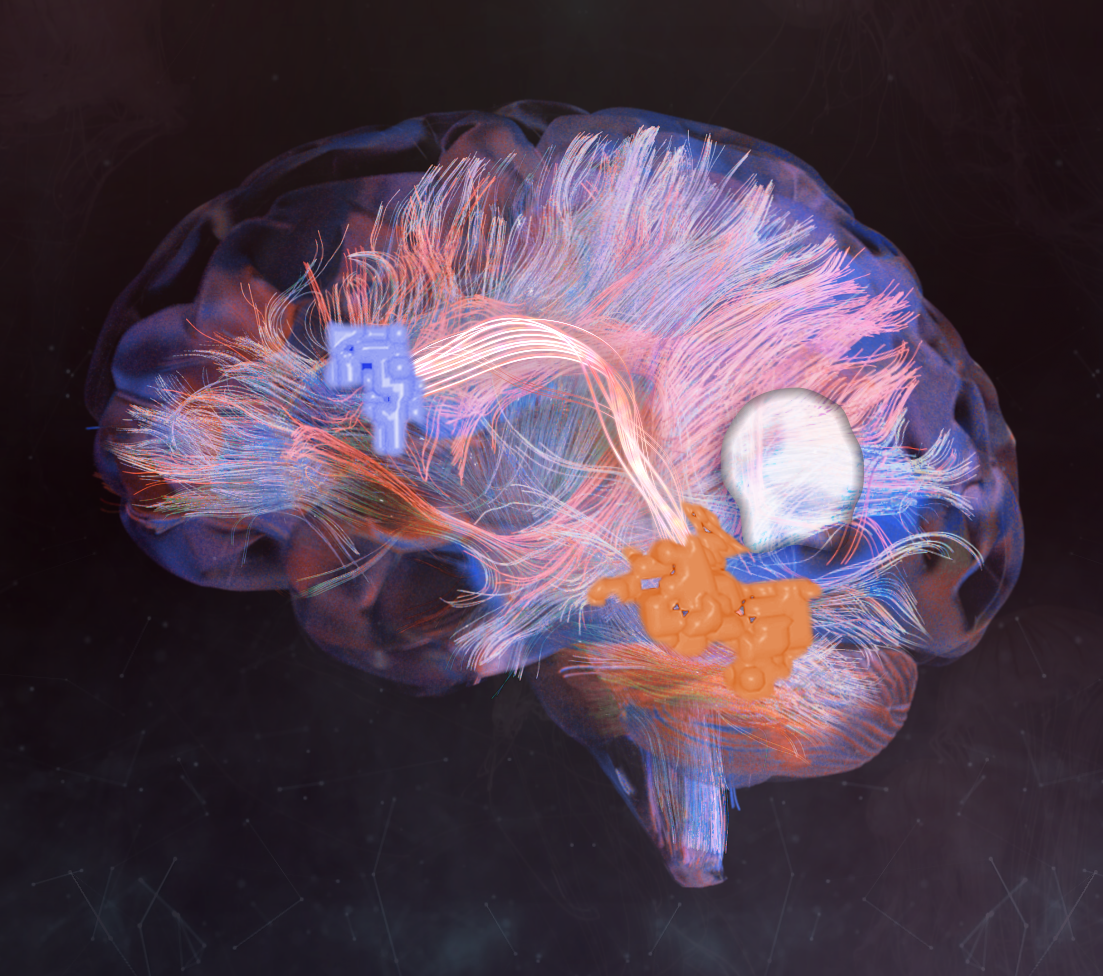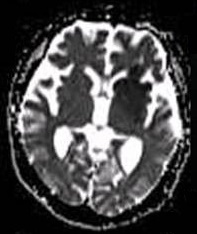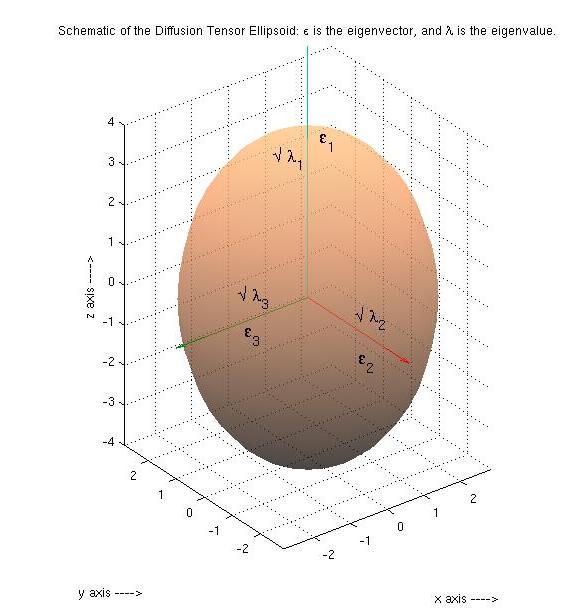|
Connectogram
Connectograms are graphical representations of connectomics, the field of study dedicated to mapping and interpreting all of the white matter fiber connections in the human brain. These circular graphs based on diffusion MRI data utilize graph theory to demonstrate the white matter connections and Cortex (anatomy), cortical characteristics for single structures, single subjects, or populations. Structure Background and description The ''connectogram'', as a graphical representation of brain connectomics, was proposed in 2012. Circular representations of connections have been used in a number of disciplines; examples include representation of aspects of epidemics, geographical networks, musical beats, diversity in bird populations, and genomic data. Connectograms were also cited as a source of inspiration for the heads-up display style of Tony Stark's helmet in Iron Man 3. Connectograms are circular, with the left half depicting the left hemisphere and the right half depicting ... [...More Info...] [...Related Items...] OR: [Wikipedia] [Google] [Baidu] [Amazon] |
Connectomics
Connectomics is the production and study of connectomes, which are comprehensive maps of connections within an organism's nervous system. Study of neuronal wiring diagrams looks at how they contribute to the health and behavior of an organism. There are two very different types of connectomes; microscale and macroscale. Microscale connectomics maps every neuron and synapse in an organism or chunk of tissue, using electron microscopy and histology. This level of detail is only possible for small animals (flies and worms) or tiny portions (less than 1 mm on a side) of large animal brains. Macroscale connectomics, on the other hand, refers to mapping out large fiber tracts and functional gray matter areas within a much larger brain (typically human), typically using forms of MRI to map out structure and function. Somewhat confusingly, both fields simply refer to their maps as "connectomes". Macroscale connectomics typically concentrates on the human nervous system, a network ma ... [...More Info...] [...Related Items...] OR: [Wikipedia] [Google] [Baidu] [Amazon] |
Diffusion MRI
Diffusion-weighted magnetic resonance imaging (DWI or DW-MRI) is the use of specific MRI sequences as well as software that generates images from the resulting data that uses the diffusion of water molecules to generate contrast (vision), contrast in MR images. It allows the mapping of the diffusion process of molecules, mainly water, in biological tissues, in vivo and non-invasively. Molecular diffusion in tissues is not random, but reflects interactions with many obstacles, such as macromolecules, fibers, and Biological membrane, membranes. Water molecule diffusion patterns can therefore reveal microscopic details about tissue architecture, either normal or in a diseased state. A special kind of DWI, diffusion tensor imaging (DTI), has been used extensively to map white matter tractography in the brain. Introduction In diffusion weighted imaging (DWI), the intensity of each image element (voxel) reflects the best estimate of the rate of water diffusion at that location. Because ... [...More Info...] [...Related Items...] OR: [Wikipedia] [Google] [Baidu] [Amazon] |
Tractography
In neuroscience Neuroscience is the scientific study of the nervous system (the brain, spinal cord, and peripheral nervous system), its functions, and its disorders. It is a multidisciplinary science that combines physiology, anatomy, molecular biology, ..., tractography is a 3D modeling technique used to visually represent nerve tracts using data collected by diffusion MRI. It uses special techniques of magnetic resonance imaging (MRI) and computer-based diffusion MRI. The results are presented in two- and three-dimensional images called tractograms. In addition to the long tracts that connect the brain to the rest of the body, there are complicated neural circuits formed by short connections among different Cerebral cortex, cortical and subcortical regions. The existence of these tracts and circuits has been revealed by histochemistry and biology, biological techniques on post-mortem specimens. Nerve tracts are not identifiable by direct exam, computed tomography, CT ... [...More Info...] [...Related Items...] OR: [Wikipedia] [Google] [Baidu] [Amazon] |
Fractional Anisotropy
Fractional anisotropy (FA) is a scalar (mathematics), scalar value between zero and one that describes the degree of anisotropy of a diffusion process. A value of zero means that diffusion is isotropic, i.e. it is unrestricted (or equally restricted) in all directions. A value of one means that diffusion occurs only along one axis and is fully restricted along all other directions. FA is a measure often used in diffusion imaging where it is thought to reflect fiber density, axonal diameter, and myelination in white matter. The FA is an extension of the concept of Eccentricity (mathematics), eccentricity of conic sections in 3 dimensions, normalized to the unit range. Definition A Diffusion Ellipsoid is completely represented by the Diffusion Tensor, D. FA is calculated from the eigenvalues \lambda_1 \ge \lambda_2 \ge \lambda_3 of the diffusion tensor. The eigenvectors give the directions in which the ellipsoid has major axes, and the corresponding eigenvalues give the magnitude of ... [...More Info...] [...Related Items...] OR: [Wikipedia] [Google] [Baidu] [Amazon] |
Angular Gyrus
The angular gyrus is a region of the brain lying mainly in the posteroinferior region of the parietal lobe, occupying the posterior part of the inferior parietal lobule. It represents the Brodmann area 39. Its significance is in transferring visual information to Wernicke's area, in order to make meaning out of visually perceived words. It is also involved in a number of processes related to language, number processing and spatial cognition, memory retrieval, attention, and theory of mind. Anatomy Connections Left and right angular gyri are connected by the dorsal splenium and isthmus of the corpus callosum. Boundaries * Anteriorly by the supramarginal gyrus. * Superiorly by the intraparietal sulcus. * Posteriorly by the parieto-occipital sulcus. * Inferiorly the angular gyrus of the parietal lobe is continuous as the superior and middle temporal gyri. Also, the angular sulcus, which is capped by the angular gyrus, is continuous as the superior temporal sulcus inf ... [...More Info...] [...Related Items...] OR: [Wikipedia] [Google] [Baidu] [Amazon] |
Lateral Sulcus
The lateral sulcus (or lateral fissure, also called Sylvian fissure, after Franciscus Sylvius) is the most prominent sulcus (neuroanatomy), sulcus of each cerebral hemisphere in the human brain. The lateral sulcus (neuroanatomy), sulcus is a deep fissure (anatomy), fissure in each hemisphere that separates the frontal lobe, frontal and parietal lobes from the temporal lobe. The insular cortex lies deep within the lateral sulcus. Anatomy The lateral sulcus divides both the frontal lobe and parietal lobe above from the temporal lobe below. It is in both Cerebral hemisphere, hemispheres of the brain. The lateral Sulcus (neuroanatomy), sulcus is one of the earliest-developing sulci of the human brain, appearing around the fourteenth week of gestational age. The insular cortex lies deep within the lateral sulcus. The lateral sulcus has a number of side branches. Two of the most prominent and most regularly found are the ascending (also called vertical) ramus and the horizontal ramus ... [...More Info...] [...Related Items...] OR: [Wikipedia] [Google] [Baidu] [Amazon] |
Circular Sulcus
The insular cortex (also insula and insular lobe) is a portion of the cerebral cortex folded deep within the lateral sulcus (the fissure separating the temporal lobe from the parietal and frontal lobes) within each hemisphere of the mammalian brain. The insulae are believed to be involved in consciousness and play a role in diverse functions usually linked to emotion or the regulation of the body's homeostasis. These functions include compassion, empathy, taste, perception, motor control, self-awareness, cognitive functioning, interpersonal relationships, and awareness of homeostatic emotions such as hunger, pain and fatigue. In relation to these, it is involved in psychopathology. The insular cortex is divided by the central sulcus of the insula, into two parts: the anterior insula and the posterior insula in which more than a dozen field areas have been identified. The cortical area overlying the insula toward the lateral surface of the brain is the operculum (meaning ''lid'' ... [...More Info...] [...Related Items...] OR: [Wikipedia] [Google] [Baidu] [Amazon] |
Cingulate Gyrus
The cingulate cortex is a part of the brain situated in the medial aspect of the cerebral cortex. The cingulate cortex includes the entire cingulate gyrus, which lies immediately above the corpus callosum, and the continuation of this in the cingulate sulcus. The cingulate cortex is usually considered part of the limbic lobe. It receives inputs from the thalamus and the neocortex, and projects to the entorhinal cortex via the cingulum (anatomy), cingulum. It is an integral part of the limbic system, which is involved with emotion formation and processing, learning, and memory. The combination of these three functions makes the cingulate gyrus highly influential in linking motivational outcomes to behavior (e.g. a certain action induced a positive emotional response, which results in learning). This role makes the cingulate cortex highly important in disorders such as Major depressive disorder, depression and schizophrenia. It also plays a role in executive function and respirator ... [...More Info...] [...Related Items...] OR: [Wikipedia] [Google] [Baidu] [Amazon] |
Double Connectogram
Double, The Double or Dubble may refer to: Mathematics and computing * Multiplication by 2 * Double precision, a floating-point representation of numbers that is typically 64 bits in length * A double number of the form x+yj, where j^2=+1 * A 2-tuple, or ordered list of two elements, commonly called an ordered pair, denoted (a,b) * Double (manifold), in topology Food and drink * A drink order of two shots of hard liquor in one glass * A "double decker", a hamburger with two patties in a single bun Games * Double, action in games whereby a competitor raises the stakes ** , in contract bridge ** Doubling cube, in backgammon ** Double, doubling a blackjack bet in a favorable situation ** Double, a bet offered by UK bookmakers which combines two selections * Double, villain in the video game ''Mega Man X4 ''Mega Man X4'', originally released in Japan as , is a 1997 action-platform game developed and published by Capcom. It is the fourth game in the ''Mega Man X'' series and t ... [...More Info...] [...Related Items...] OR: [Wikipedia] [Google] [Baidu] [Amazon] |
Neural Network
A neural network is a group of interconnected units called neurons that send signals to one another. Neurons can be either biological cells or signal pathways. While individual neurons are simple, many of them together in a network can perform complex tasks. There are two main types of neural networks. *In neuroscience, a '' biological neural network'' is a physical structure found in brains and complex nervous systems – a population of nerve cells connected by synapses. *In machine learning, an '' artificial neural network'' is a mathematical model used to approximate nonlinear functions. Artificial neural networks are used to solve artificial intelligence problems. In biology In the context of biology, a neural network is a population of biological neurons chemically connected to each other by synapses. A given neuron can be connected to hundreds of thousands of synapses. Each neuron sends and receives electrochemical signals called action potentials to its conne ... [...More Info...] [...Related Items...] OR: [Wikipedia] [Google] [Baidu] [Amazon] |
Biological Neural Network
A neural network, also called a neuronal network, is an interconnected population of neurons (typically containing multiple neural circuits). Biological neural networks are studied to understand the organization and functioning of nervous systems. Closely related are artificial neural networks, machine learning models inspired by biological neural networks. They consist of artificial neurons, which are mathematical functions that are designed to be analogous to the mechanisms used by neural circuits. Overview A biological neural network is composed of a group of chemically connected or functionally associated neurons. A single neuron may be connected to many other neurons and the total number of neurons and connections in a network may be extensive. Connections, called synapses, are usually formed from axons to dendrites, though dendrodendritic synapses and other connections are possible. Apart from electrical signalling, there are other forms of signalling that arise from n ... [...More Info...] [...Related Items...] OR: [Wikipedia] [Google] [Baidu] [Amazon] |








